A Trinitarian Anglo-Saxon Metaphysics
Examined through the literary masterpiece The Pillars of the Earth by Ken Follett
Spoiler Alert: This essay contains several spoilers. Proceed at your own risk.
When one contemplates upon the Anglo-Saxon race in 2025, they immediately imagine a people that is so unbelievably autistic about the rule of law and individual rights that they have made a god out of their millennia-long tradition of civil liberalism.
Even so, anyone familiar with medieval history realizes that this fervent pledge to ideological neutrality, at least in a legal sense, by the Anglo-Saxons, was extraordinarily hard-won, coming at the cost of brutal internal conflicts such as the Thirty Years’ War.
Within the Tortuga Society Inaugural Book Club, some of our guys had the opportunity to dive into the (fictionally stylized) on-the-ground chaotic conditions of 12th century England; a period which lands smack dab in the middle of what is now labelled The Anarchy, a full century before the Magna Carta was signed, and a full 500 years before the emergence of anything resembling a Westphalian nation-state.
The main things that one notices about The Pillars of the Earth, aside from the way Ken Follett takes great responsibility toward historical accuracy, are the phenomenal detail he puts into exposing:
The sensory, mathematical realities of post-Roman Western architecture and craftsmanship;
The sheer complexity of dispositions that make up his main characters – and, in particular, his accurate portrayal of all kinds of genuine male interiority.
This second point, from my perspective, is what brings his literary masterpiece to life because it constructs a window through which one peers to grasp the nuances of Anglo-Saxon metaphysics; nuances that barely register to the average American in the post post-modern abyss of the 21st century.
My aim here is to thoroughly educate those reading my words about a special interdependent relationship that persists, to this day, within and that guides the English spirit, but that has all but been forgotten outside of a few dark corners in group chats and chauvinistic internet forums.
To accomplish this task, I first need to discuss some rather hyper-abstract concepts. Do not fret, however. I will thoroughly unpack them such that even if you reach the end of this essay understanding merely 35% of its content, I will have implanted the mental motions for you to metabolize everything in due course.
The Landrian Triad
Despite my American upbringing, I cannot escape my inherent Brahmin nature in some particular ways. One of those is my tendency toward hyper-intellectualism. Thus, we’re going to start this investigation with some heady theory from an author called Forrest Landry.
Forrest Landry’s book An Immanent Metaphysics offers a trinitarian system built on three modalities—immanent (immediate relational experience), omniscient (structured external perspective), and transcendent (universal principles beyond context)—that form the foundation of any coherent domain. This framework represents the most generalizable form of trinitarian thinking because it focuses on quality and relationship rather than specific content or form. Landry’s modalities serve as a universal template for analyzing everything from perception and consciousness to political structures and moral reasoning, revealing the deep patterns that underlie seemingly disparate systems.
For those who immediately grasp this triplicate tension, I offer some basic examples that illustrate it in a smattering of domains.
Here we see:
The omniscient corresponds to the structured object being perceived.
The immanent corresponds to the immediate act of perceiving;
The transcendent corresponds to the perceiver who stands apart.
For those who are struggling to grasp the above word salad and basic examples, we’ll concretize it more thoroughly by examining the Landrian relationship among Law, Power, & Morality within this Anglo-Saxon historical fiction.
I. Law-Omniscience: Tom Builder
Tom Builder is the picturesque patriarch of yore. As a freeman, or ceorl (pronounced: churl), he retains ultimate responsibility both for his own earning prospects as well as his family’s welfare. In any given situation, the buck stops with him, which means he must be clever and canny, refusing to waste even the smallest amounts of resources or emotions on fruitless tasks.
Notably, in this story, it is a freeman like Tom who represents the lawful-omniscient orientation, rather than a merchant, scientist, or philosopher — who are the usual characters of this type.
However, this makes sense, given that in pre-modern England, any ongoing institutional stability, let alone legal consistency, is almost entirely absent in society. Anyone who reads this book likely lives in an environment with access to large-scale, non-volatile capital markets and a host of reproducible empirical research and methods. None of these resources has a hope of emerging for another millennium from the vantage point of Follett’s characters. (At most, one witnesses the English Jews forming proto-banks that allow for informal, but regular, currency exchanges and storage.)
Indeed, given the lack of such professionals in the 1100s, it falls to highly skilled workmen like Tom to argue from the omniscient: that lawful structures are the knowable, workable systems we can study and improve.
Even in the most precarious situations — such as when his precious livestock is stolen by a bandit, or his family begins descending into starvation during winter — Tom maintains a diligent attitude, focusing on making methodical progress toward material security.
Your favorite long-form writer on Substack is adept at the omniscient modality. They can pull in large amounts of disparate information, form and impose frames onto it to create insightful points, and lead you through a thoughtful and curated roadmap of meaning they’ve made.
Conscientiousness and systematicity take up the center mantlepiece of the omniscient realm.
Within the Christian framework, the Father is the aspect of the Holy Trinity manifest as omniscient.
The Jungian cognitive functions most closely associated with law-omniscience are extraverted thinking (utility), introverted thinking (logic), and introverted sensing (memory). Many skilled administrators are ESTJs, and ISTJs often make for expert builders.
II. Power-Immanence: William Hamleigh
Everyone has met a William Hamleigh during his or her life — whether as their playground bully or their overbearing boss. The William Hamleighs of the world have a narrow view of what makes the world turn on its axis. Namely, that it is the job of those who are of high station to use power to collect and enforce a strict, and even honorable, set of loyalties.
William embodies the raw vigor that animates all political structures. He operates in the moment – marshaling violence, inspiring terror, and demanding allegiance through the sheer intensity of his will.
Within the medieval context, kings, earls, and lords argue primarily from the immanent modality: that power relations are the basic reality.
It is a mistake to equate William’s power only with domination, though that is his favorite activity. While his tremendous skill on the battlefield matters, what matters more is his ability to marshal manpower in strategic ways on multiple occasions. The best example of this is when he shows up at the last minute with hundreds of soldiers to aid King Stephen against his rival Queen Maud — a battle he ultimately loses but not without inflicting heavy losses and nearly inducing a stalemate. This demonstrates that power-immanence isn’t merely brutish force, but the capacity to mobilize real support in consequential moments.
Those who operate primarily from the immanent modality often seem amoral or disruptive.
When William extracts rents from his tenants, suppresses rebellion, or forges alliances through fear and respect, he is engaging with the fundamental interdependence that precedes all structured order.
He rarely consults a higher power or official code of conduct; he simply asks, “What can I make happen right now with split-second timing and the collateral supplies in my vicinity?
Humor and combat are two of the main rulers of the immanent realm.
Your favorite shit-poster on Twitter is adept at the immanent modality. Constantly sending off bangers, without too much concern for larger implications or significance, is a function of responding to all sorts of complex present realities and pushing on hot buttons in the middle of a dynamic, hyperactive information arena.
Within the Christian framework, the Son is the aspect of the Holy Trinity manifest as immanent.
The Jungian cognitive functions most closely associated with power-immanence are extraverted sensing (force) and introverted feeling (value). Many brilliant front-line tacticians, in a variety of situations, are ESFPs.
III. Morality-Transcendence: Prior Philip
Prior Philip is the type of righteous authority that any man would benefit from having on his side, and that anyone would fear to have as his adversary. Despite all the worldly pressures that might induce him to take shortcuts or look away from inconvenient details, Philip never succumbs to temptation and stays true to his callings.
He is not afraid to put his own life on the line, recklessly, without proper defense, to stand up for virtuous ends.
The transcendent realm is filled to the brim with the souls of mystics and prophets who attempt to bring their ethereal divinations into the light of human awareness. Within the medieval context, priests (to the extent they aren’t corrupted) argue from the transcendent: that eternal moral principles observe and judge all earthly arrangements.
These eternalisms elude full articulation. This is why falling in love is such a transcendent experience: it defies explanation, and to explain it is to render it non-transcendent.
Yes, you could try to describe the way your wife looked at you for the first time from across the room, and the experience of taking in her luscious presence. You could also try to describe how she shows up consistently, unyieldingly, to take care of your profound emotional and physical needs – as well as your children and community.
But neither of these modes really captures the full experience of true love, do they? No, and yet there is still a power within this love that draws you in more deeply than what can be known through immanence or explained through omniscience.
When many people discuss their faith, this morality-transcendence is what they are pointing to: whatever they are sure they can believe in, in an almost unchosen manner, that cannot be computed or reduced to any certain justification.
Within the Christian framework, the Holy Spirit is the aspect of the Holy Trinity manifest as omniscient.
The Jungian cognitive functions most closely associated with morality-transcendence are introverted intuition (sight), extraverted intuition (ideation), and extraverted feeling (harmony). There is almost no better priest than the INFJ.
This essay is a sophisticated attempt at engaging the transcendent modality. If you perceive closely, you will notice that I am attempting to reveal an invisible set of threads that coordinates many different levels of perception — across philosophy, literature, and spirituality — from outside any of them. A truly skilled reader would use this opportunity not to learn about any particular subject matter in the essay, but more deeply about who I am as a human, as demonstrated through my weaving together of abstract concepts, archetypal poetics, historical tidbits, and concrete realities.
The Balancing Arc of Maturity
While each of these characters acts from a primary metaphysical modality, he is required to rely on and integrate aspects of the others to mature into a fuller person.
During the course of his life, tragically cut short by his violent murder, Tom learns that the ultimate purpose of investing his energy into the microscopic minutiae of cathedral construction is to bring glory to his Creator. He also learns to mediate behavioral disputes between his biological son (who is a bit of a chud), his adopted son (who is a dreamy jongleur), and his second wife (who is a feminine firebrand and perhaps a proto-feminist). While it’s clear he prefers his awareness to remain within the confines of law-omniscience, he figures out how to practice morality-transcendence and power-immanence — respectively, as described above — and it makes him a better man.
Prior Philip’s arc, in my opinion, houses the most interesting case of growth. His origin story discloses why he places his conviction into morality-transcendence: as a young child, when two Welsh warriors killed his parents before his eyes, the only thing that spared his life was the force of a monk, who, through sheer spiritual indignation, convinced the warriors to relent and spare the child Philip.
I’ve jokingly stated that Prior Philip is my spirit animal, and I think a main reason for this is that his arc of maturity parallels my own in several ways. Prior Philip represents in me the man who was born a naïve idealist, and through suffering and setback, is forged into a dangerously capable pragmatist who nevertheless stays true to his mission. (To caveat, my largest departure from Philip’s character lies in the fact that he hates romance and sex, and I basically love both of those way too much).
In the early chapters, we see a young monk fresh from a forest monastery, who must learn how to argue in public on his feet for his goals in taking jurisdiction over the priory. In later chapters, he becomes proficient at playing high-stakes political games at the top levels of the English court, involving complex land deals and financial transactions. Simply as a matter of course, and as a necessity to uphold his covenants with God, Philip learns to ground his morality-transcendence within the balancing modes of law-omniscience — bringing order to the church’s pocket book — and power-immanence — blustering threateningly to his opponents to cow them.
It is William Hamleigh, at the end of the story, who seems to suffer the most — for through his hubris, he refuses to grow into a comprehension of existence that goes too far beyond power-immanence. This is not to say that he doesn’t show moments of genuine contrition for his villainous behavior and a desire for a more balanced disposition. However, as we see, every time in the plot where he meets a vulnerability, instead of using the opportunity to relax his predilection toward despotism, he runs away with his tail between his legs.
Certainly, it doesn’t help that his two biggest advisors, Lady-Mother Hamleigh and Bishop Waleran, are only too eager to provide him the intellectual justification for his egoic weakness — they, too, are playing their own power games and have no compunction about using William as their pawn.
Even at the very end of the novel, when he looks to save his deceased mother from purgatory, William relies on manipulation bordering on treachery — stealing stonemasons from Kingsbridge — to complete a cathedral of his own.
In a sense, England itself is finding its own maturity through the shenanigans of these characters working out their roles. The anarchy of the 12th century represents a nation struggling to integrate these three modalities into a coherent civilization.
William and the feudal lords embody the raw power-immanence that has dominated the island since the Norman Conquest.
Tom and the emerging class of skilled craftsmen represent the law-omniscience beginning to take root – the possibility of stable institutions and systems that persist beyond any single person’s will.
Philip and the Church represent morality-transcendence, attempting to compel both power and law toward higher purposes.
The civil war between Stephen and Maud that forms the backdrop of the novel is itself England’s crisis of integration: a nation that cannot yet stabilize because these three forces haven’t learned to balance one another.
By the novel’s end, with the construction of Kingsbridge Cathedral and the ascension of Henry II, we witness the beginning of England’s maturation into hosting a necessary and productive tension among these modes. The cathedral itself stands as the physical manifestation of the fruits of integration.
The Divine Artist Metaphysician
As many of the external dynamics in life are governed by the triadic metaphysics of law, power, & morality, it’s only fair to ask what it looks like for a single person to exhibit internal supremacy among them.
Who is the master of the trinity in its fullness?
For Carl Jung, this master trinitarian metaphysician is the fully individuated man, who has realized and executes on both his independence and well-chosen interdependence.
For Sigmund Freud, the master trinitarian metaphysician has conquered his erotic drives and wields them with total responsibility.
For Friedrich Nietzsche, the master trinitarian metaphysician is the vital man who has so thoroughly transvaluated his base ethical conditioning that wherever he goes and whatever he touches is cured of meaninglessness.
For Martin Heidegger, the master trinitarian metaphysician is the one who has achieved authentic Dasein — standing resolute in the clearing where Being reveals itself.
For Jean Baudrillard, the master trinitarian metaphysician is … well, he may likely argue there is no master in the age of simulation and hyperreality, and that the definition itself is incoherent.
Expanding on this attitude, for me, the master trinitarian metaphysician is the artist — but not in the romanticized sense of the tortured creator or the authentic expresser of inner truth. Rather, I mean the artist in Hans-Georg Moeller’s sense: one who implements profilicity.
Profilicity represents a way of existing that transforms both the premodern emphasis on sincerity (being true to social roles) and the modern obsession with authenticity (being true to an inner self) into a molten meta-performance that includes, but is not limited to, both. The profilic artist understands that we all perform life across multiple contexts and platforms, and embraces this as an opportunity for constant creativity and reinvention.
He recognizes that creativity itself is a form of mastery, and his true nature can be crafted, refined, and adapted across the three Landrian modalities.
The artist masters law-omniscience by understanding which structural frameworks enable his vision.
He wields power-immanance through immediate charisma and on-the-spot technical dazzlement.
And he draws from moral-transcendent principles that guide his art without attaching them to nostalgia and decrepitude.
The artist doesn’t merely operate within the trinity — he composes with it, treating reality itself as his medium. This is why the greatest political leaders, spiritual teachers, and cultural innovators often strike us as having an almost supernatural fluidity: they’re not trapped in any single modality but dance between all three with the ease of someone who has rendered the metaphysics second nature.
One misconception that I feel obligated to clear up is the mistaken idea that the artist who masters trinitarian metaphysics is necessarily virtuous. Most definitely, this is not the case. One could argue that the trinitarian metaphysical artist must be noble — but nobility does not preclude evil.
I would consider Vladimir Lenin to be one of the most realized political artists in modern Western, if not global, history. Of course, he was supremely intelligent and ruthless; but what really put him over the edge was his true & and transcendent belief in the righteousness of communism, and his willingness to play in the high-stakes arena of bringing his proletariat vision to fruition.
Unfortunately, the ultimate result of his agenda — widespread Bolshevism — was one of the most oppressive and violent disasters of human history.
On the other hand, a good example of a trinitarian political artist who is virtuous, and who comes directly from the Anglo-Saxon lineage, is George Washington. (Exercise left up to the reader to explicate why.)
From my own ancestral culture, I believe Krishna to be a shining example of this archetype. Krishna is often referred to as “The Divine Statesman” and in my opinion, this comes less from the fact of his expert diplomacy skills, and more from the fact they he was really good at Fucking Around Really Well (that too with mirth and laughter) across all three modes.
Throughout the Mahabharata, Krishna operates simultaneously as religious guide, political strategist, and reassuring friend. He counsels the Pandavas on dharma (transcendent morality), orchestrates complex political alliances and military tactics (omniscient law), and appears to save many of his allies and devotees, e.g. Draupadi, from violation in a decisive moment (immanent power).
What makes Krishna remarkable is not that he excels in any single modality, but that he flows between them without ever losing coherence. His playfulness — the flute-playing, the butter-stealing, the romantic dalliances of his youth — isn’t a departure from his divine statesmanship but integral to it. Rather than compartmentalizing, the artist-metaphysician integrates through constant creative expression.
Only toward the end of the Mahabharata does he actually reveal his celestial form to Arjuna and recite what is considered sacred scripture within the Hindu canon. One gets the feeling that the contents of the Bhagavad Gita don’t matter nearly as much as the fact that, in this scene, Krishna is showing that throughout the entire saga, he was operating according to an ineffable, non-arbitrary, barely perceptible cosmic plan, and that he is finally ready to explain it to the world.
What About The Girls?
Thus far, every single idea I’ve presented in this essay is according to a distinctly masculine perspective.
One reason for this is, of course, the fact that The Tortuga Society is a fraternal organization — meaning our members and most of our readers are men — and therefore are more likely to relate to this framing.
Another more important reason for this, however, is that the trinitarian metaphysics explored, both in the book and the real English historical record, are far more accessible through the male character archetypes.
I do not doubt that there is a matriarchal version of the ideas presented in this essay, and that comprehension of that side of the trinitarian metaphysics is significantly important.
That said, I personally would find it to be a lot trickier to accomplish the task of enumerating them, and not just because I’m a man, but because the nature of the feminine is much more indirect, wily, and elusive.
For example, if you’ve ever been to an American high school lunch cafeteria or sports rally, you will have undoubtedly perceived a complex feminine engagement with the omniscient modality — a social law that pervades all manner of status and hierarchy through indirection and relational subtlety rather than explicit structure.
Yet, even a movie like Mean Girls, which does an excellent job of capturing and portraying this modality through the feminine, barely scratches the surface of its many subtleties.
(Yes, I know this is a silly example, but I genuinely think it’s one of the best movies that explores feminine metaphysical artistry.)
Perhaps, rather than achieving complete understanding, the best men can hope for is to attract and court the most splendid embodiments of femininity that emerge to complement their distinguished masculine artistry.
Surfing The 21st Century’s Waves
As the contours of civil liberalism continue to fall apart at the seams in 2025, the Western world is witnessing the Anglo-Saxon man slowly slide away from his robust tradition, back into the seductive lap of organized barbarism.
Approaching two millennia later from the time of the Pillars of the Earth, what seems to be occurring is quite the opposite of the dilemmas that plagued the antediluvian ancestors of today’s Englishman: a byzantine, predatory, inconsistently applied rule of law that is so overbearing, it suffocates the proper exercising of power, and any possibility of genuine transcendence.
Far from promoting an individuality that empowers men to become divine artists, what exists is a panopticon of perverse incentives and stimuli that offers shallow forms of identity while parasitizing on any movement towards balanced belonging within a technologically advanced civilization.
In particular, as increasing hordes of high-quality men continue to retreat from a mass-produced society that is both utterly nihilistic and ruinously pleasure-maximizing, the 21st century will likely witness the formation and propagation of several small-scale federalistic fraternal efforts that purport to reclaim and enthrone a viable Landrian metaphysics.
This phenomenon is not likely to remain confined to the Anglo-Saxon world. The impulse to found and rule a private, invite-only cryptocity with trusted friends is rapidly rising.
Whether these attempts devolve into incoherent factionalism, collapse into destructive cults of personality, calcify into exclusionary social clubs detached from meaningful purpose, or genuinely spring forth into legitimate guild-like bodies of practical communion and mutual flourishing remains to be seen.
For our part, the Tortuga Society was founded so that we fellows could throw our hats into the ring of sovereign experimentation.
We may not yet possess all the skills and answers to achieve full trinitarian fellowship in our own time, but no matter our eventual scope and impact, we choose to take up the mantle of leadership and put our best effort toward establishing a well-guarded, aesthetically refined haven for fraternity and disciplined liberty.


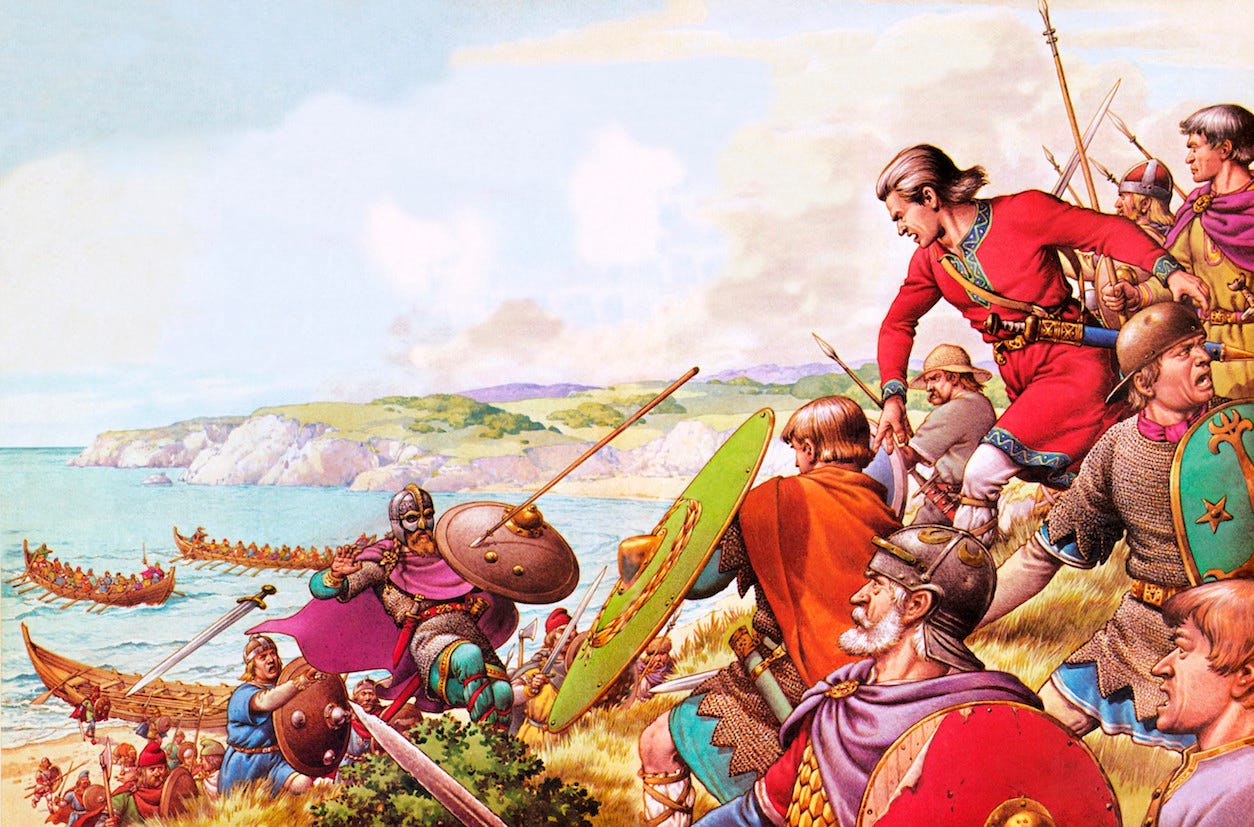
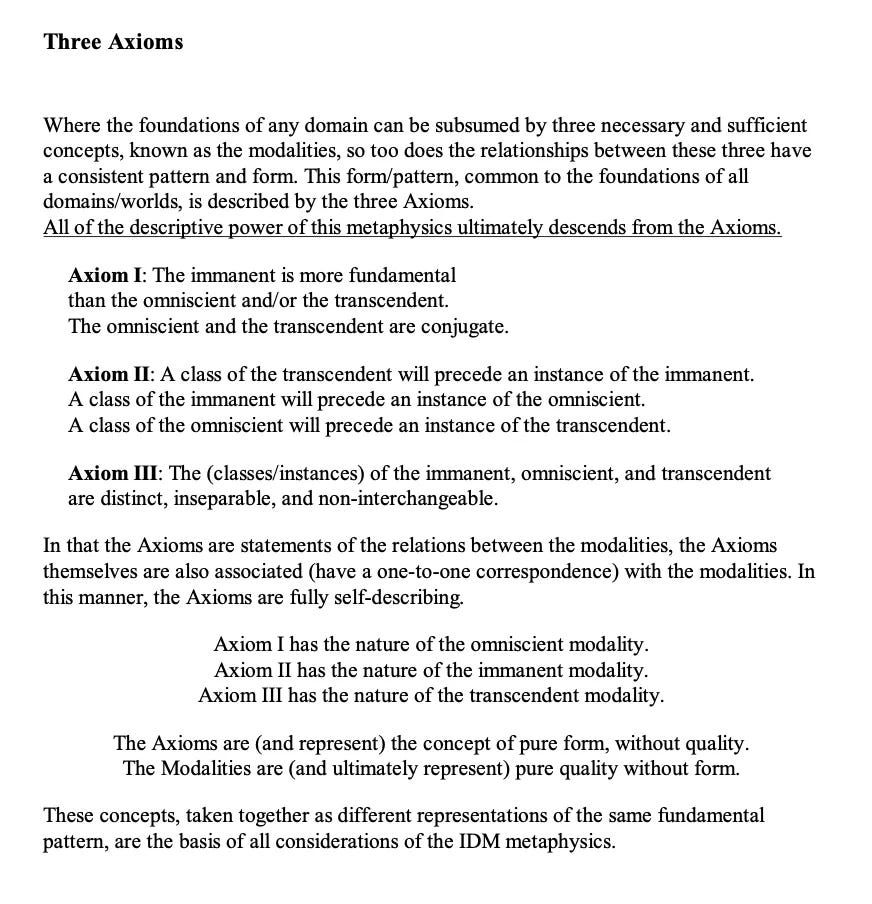
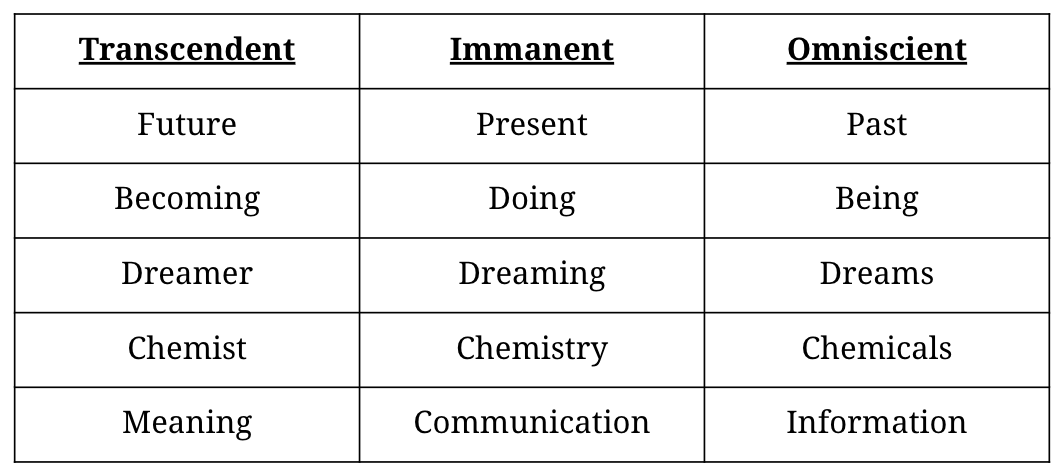
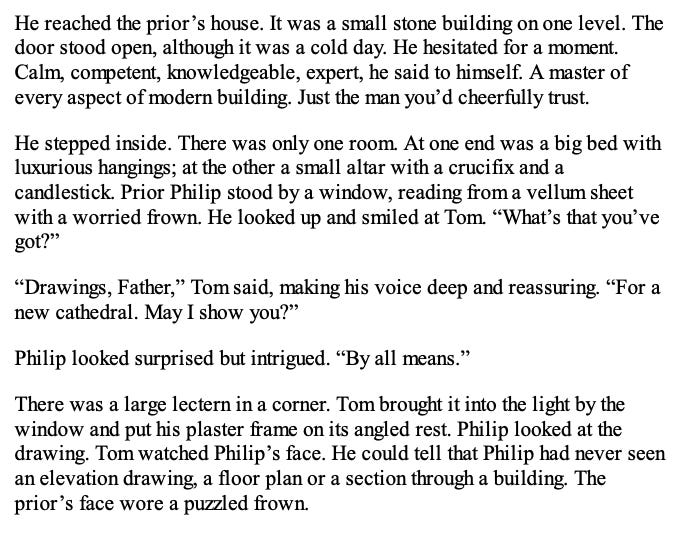

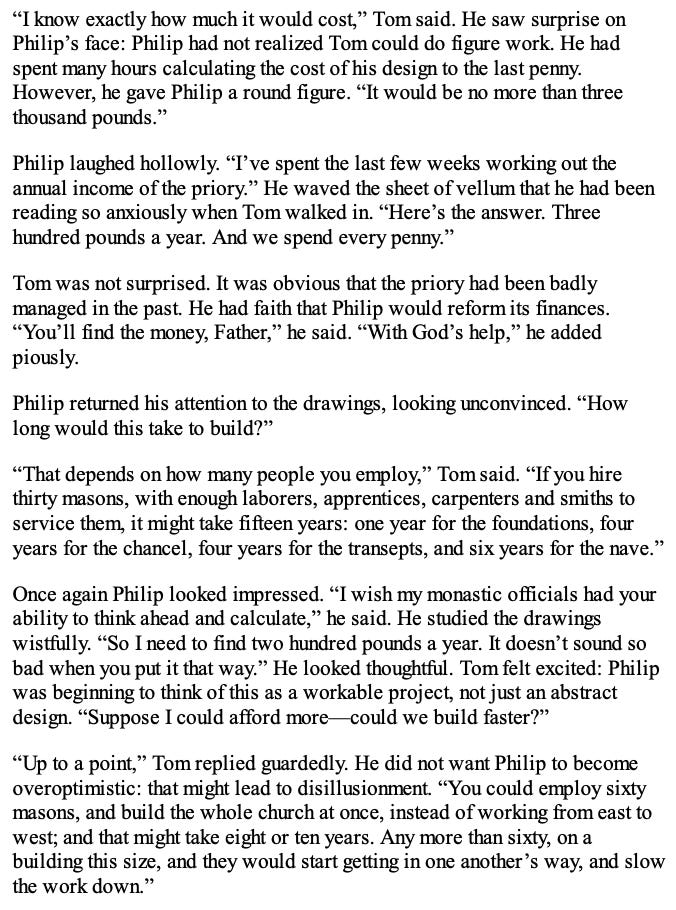
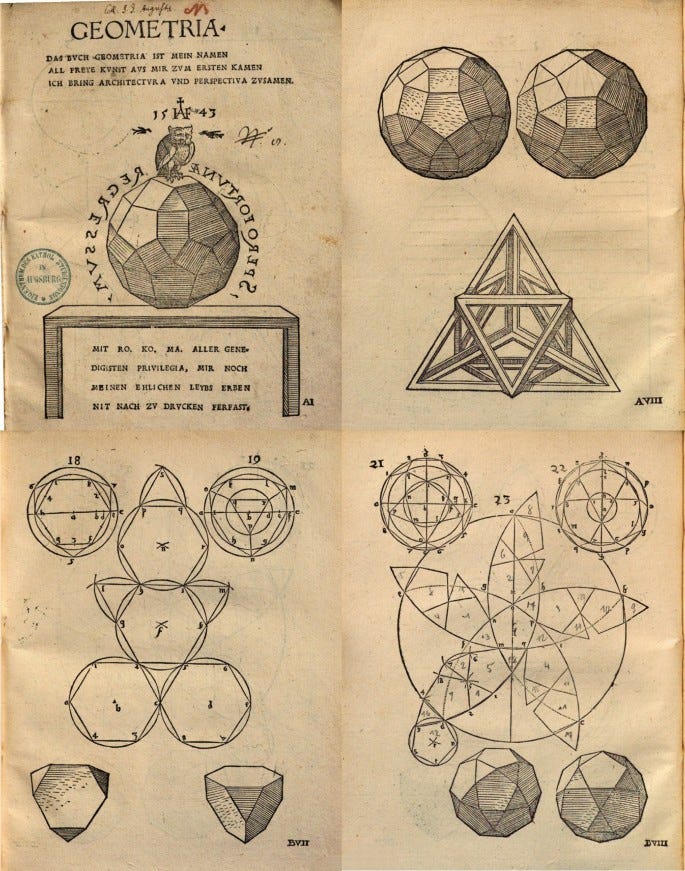
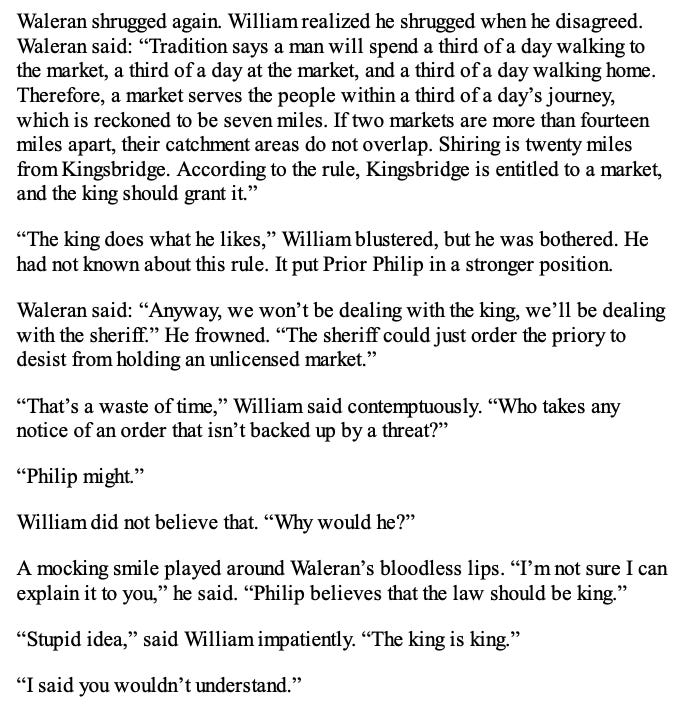
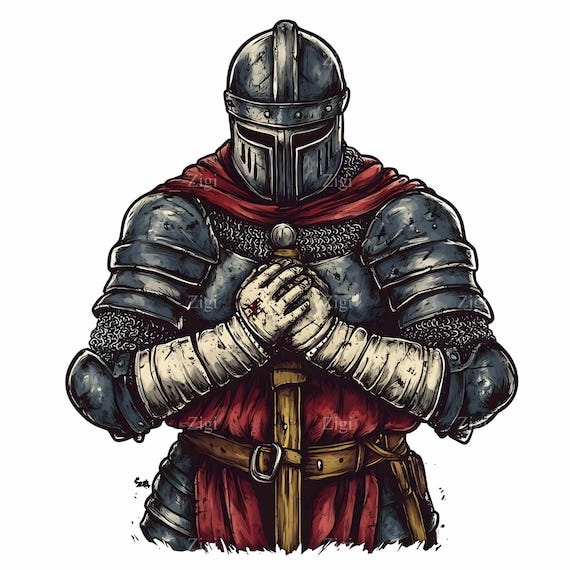
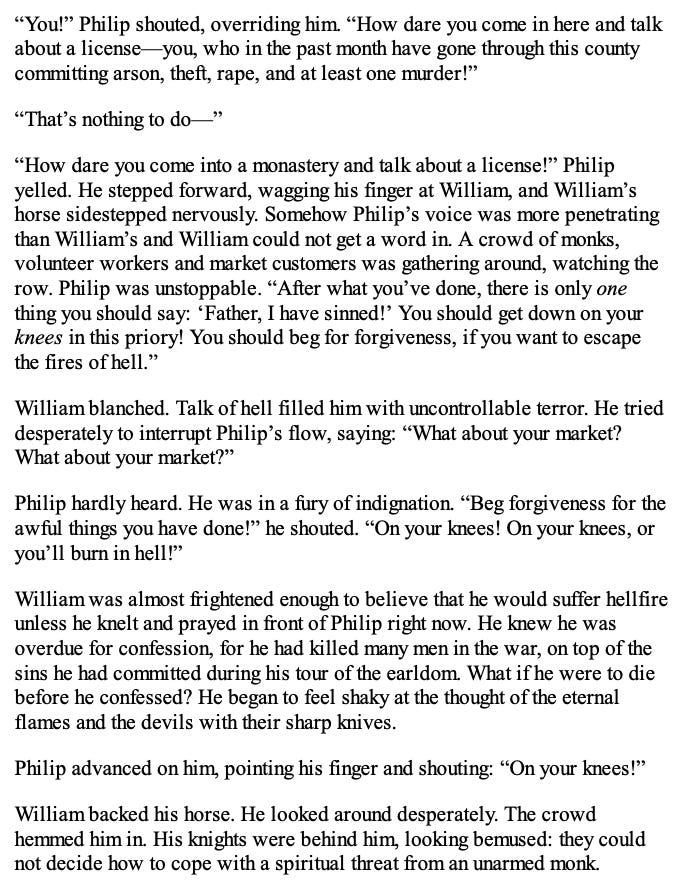
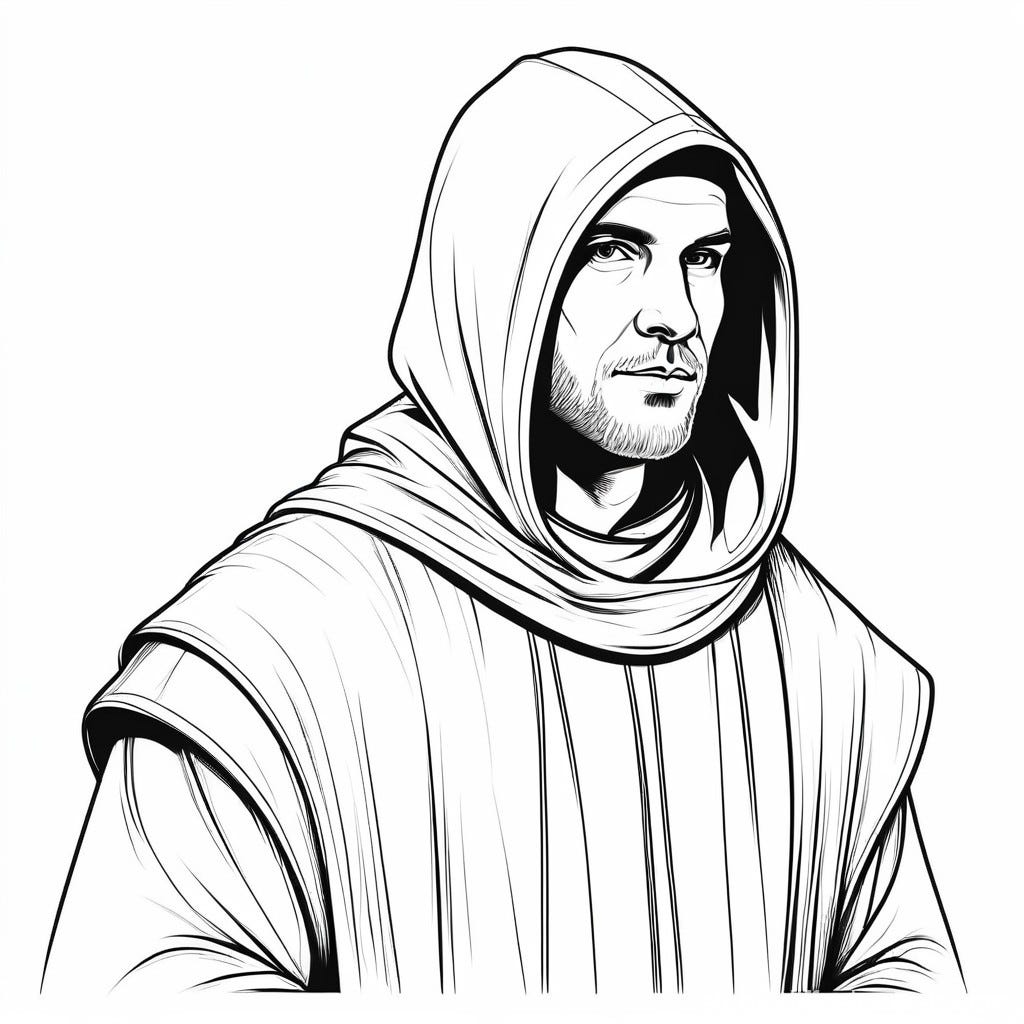
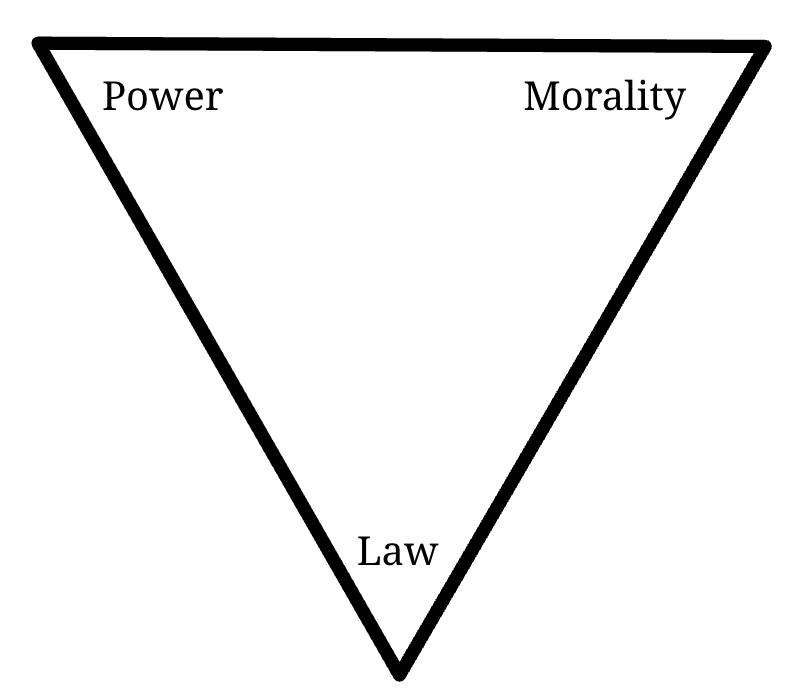
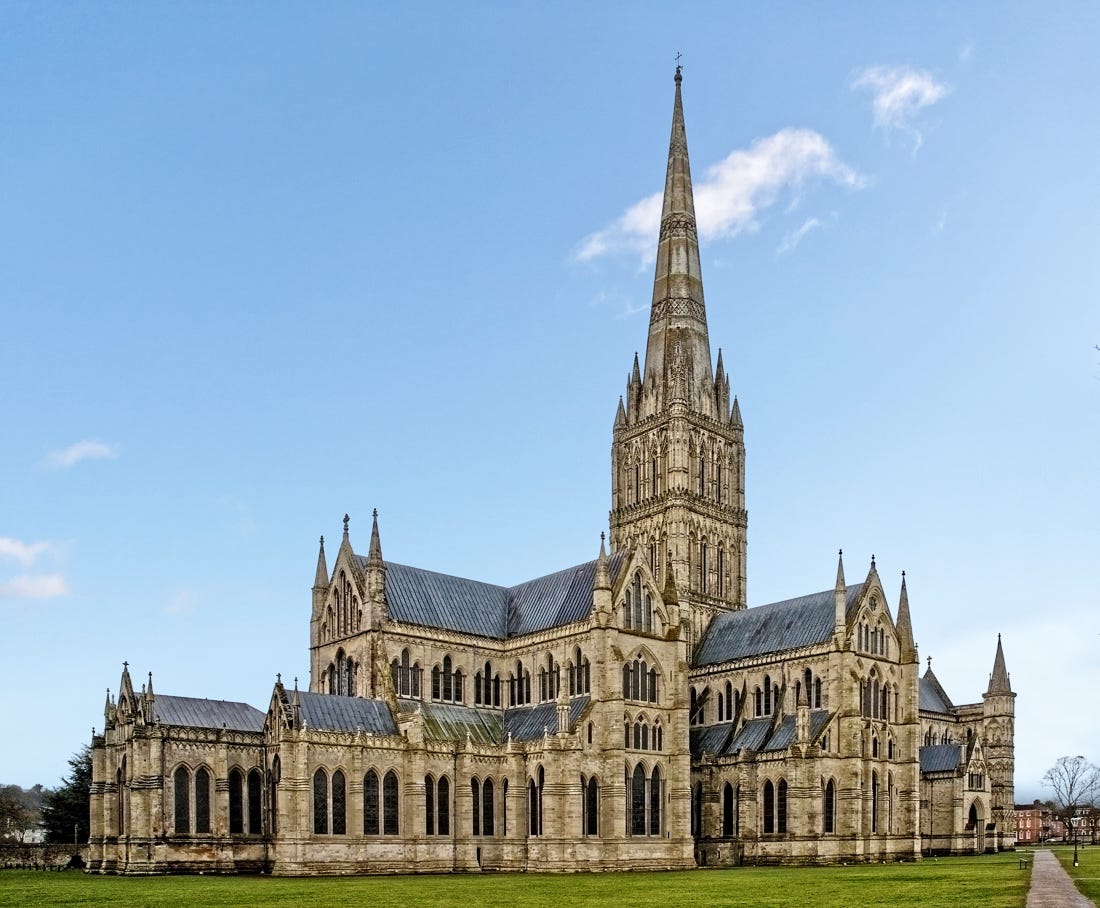
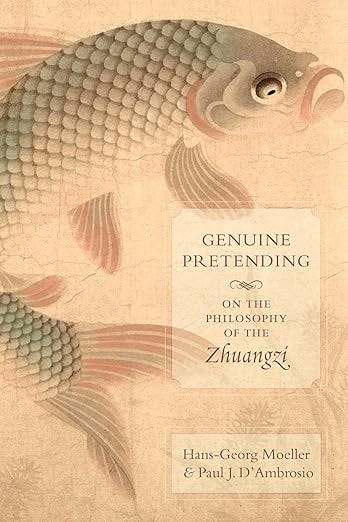

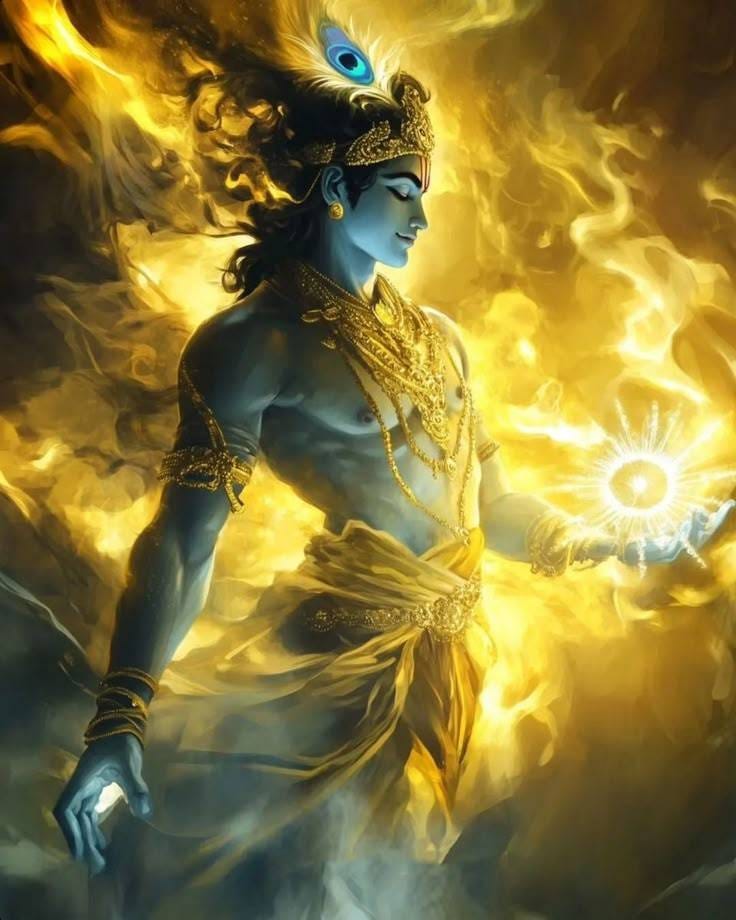
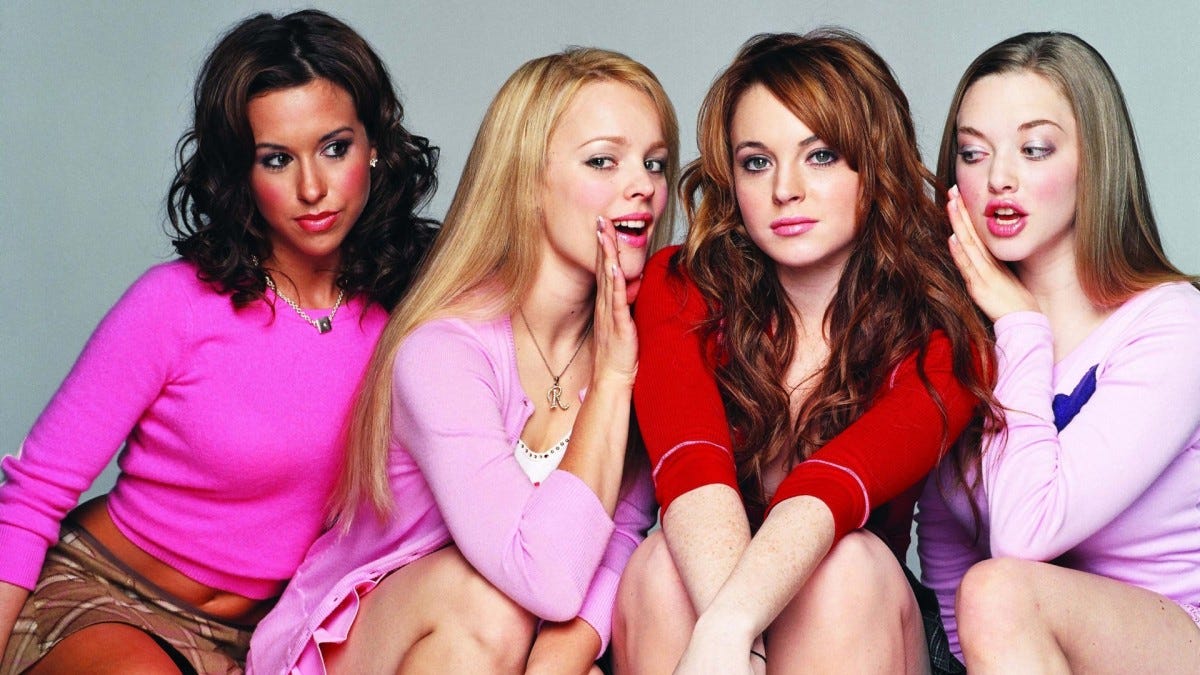

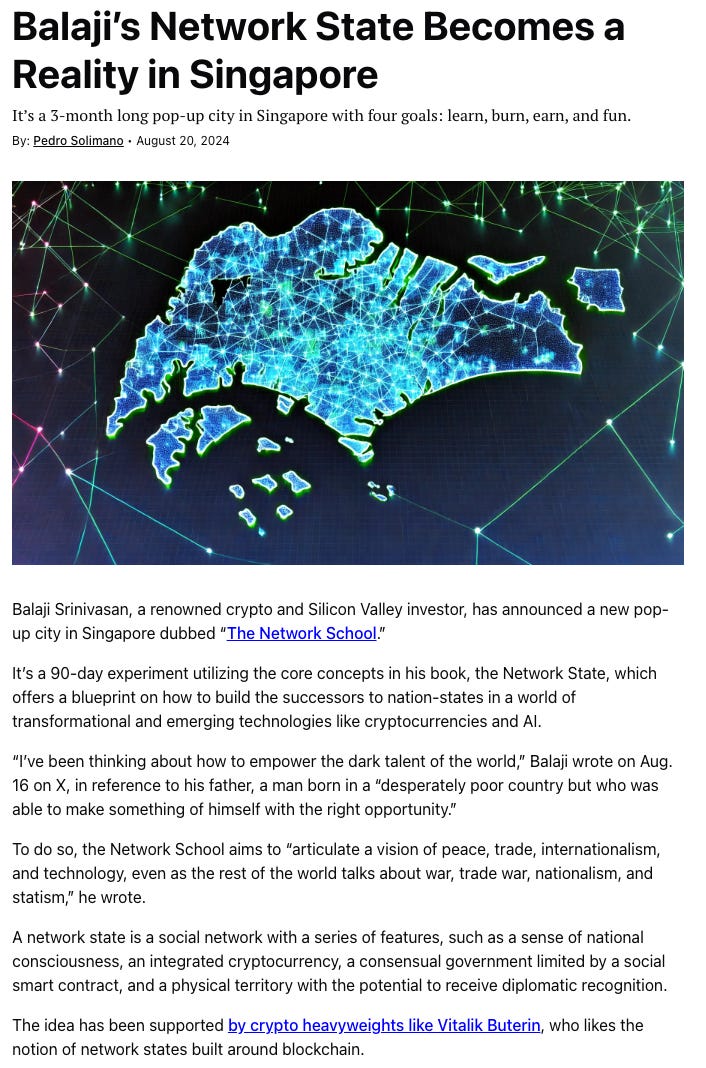
Wonderful essay Rajeev — an essay that makes me proud to be a Tortugan.
I view Jack as rooted primarily in the power-immanent side of the triune; he's William’s inverse, acting within that realm through virtue rather than vice. He can also reach into the moral modality, seeing the cathedral not as a means to status or salvation, but as a higher calling to beauty & art themselves rather than his stepfather's calling toward divinity. Where he falters is in the Law modality; he tends to pursue quick, expedient fixes without weighing the larger structure of things. However, by the time he’s overseeing the building of Kingsbridge’s wall, you can sense that he’s starting to grasp it & understand that whill the chaotic can be a conduit toward creative inspiration — a society must have a common understanding (law) to allow for creation to flourish.
He's highly skeptical of Law qua Law & more amenable to Natural Law (math/physics).
I think of Jack's triune modality as power → beauty → law, instead of Tom’s law → power → morality or Philip’s morality → law → power.
What stood out to me most was the idea that England itself was maturing through these characters; like the country was figuring out how to unite order, strength, and faith into something stable. The cathedral as the physical symbol of that balance really stuck with me too.
Still wrapping my head around how the “artist-metaphysician” fits into all of it, but I like the thought that mastery isn’t just moral or intellectual but also kinda creative. Makes me think learning to compose with the forces instead of being ruled by them is sorta the theme.
Can't say I completely grasp it all but really enjoyed this eitger way!